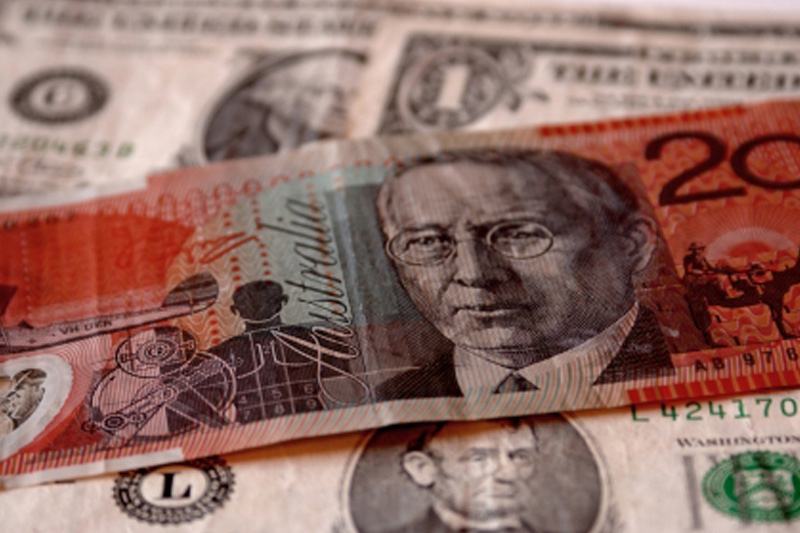Investing.com - The Australian dollar was little changed against its U.S. counterpart on Friday, after a robust U.S. jobs report for January reinforced expectations for a mid-year rate hike by the Federal Reserve.
The Labor Department reported Friday that the U.S. economy added 257,000 jobs in January, far more than the 234,000 forecast by economists. December’s figure was revised to 329,000 from a previously reported 252,000.
While the unemployment rate ticked up to 5.7% last month from December’s 5.6%, hourly earnings and the participation rate both saw increases in January.
The upbeat data added to the view that the strengthening economic recovery may prompt the Federal Reserve to start raising rates from near zero levels as early as June.
AUD/USD hit a session low of 0.7779 following the robust jobs data from a high of 0.7875 earlier, before subsequently consolidating at 0.7799 by close of trade, up 0.01% for the day and 0.36% higher for the week.
The Aussie plunged to 0.7651 against the greenback on Tuesday, the pair's lowest since May 2009, after the Reserve Bank of Australia unexpectedly cut interest rates to a new record-low 2.25% from 2.50%, citing an overvalued local currency.
At the conclusion of its monthly policy meeting, RBA Governor Glenn Stevens said that growth will be weaker for a longer period of time and that the unemployment rate should rise higher than expected.
On Friday, the central bank eased the outlook for inflation in its quarterly Statement of Monetary Policy, while leaving clues to its next policy moves deliberately vague.
Elsewhere, concerns over Greek debt negotiations continued to weigh on market sentiment.
Standard and Poor’s downgraded Greece to B- from B late Friday, one notch above default, and kept the outlook at "negative", indicating that further ratings cuts are possible.
In the week ahead investors will be awaiting Thursday's U.S. data on retail sales and jobless claims and Friday’s report on consumer sentiment for further indications on the strength of the economic recovery.
Speeches by RBA Governor Glenn Stevens will also be in focus as well as key Australian employment data.
Over the weekend, China reported a trade surplus of $60.0 billion in January, compared to expectations for $48.9 billion and up from a surplus of $49.6 in December.
Exports slumped 3.3% from a year earlier last month, missing expectations for a 6.3% increase, while imports tumbled 19.9%, much worse than forecasts for a decline of 3.0%.
The Asian nation is Australia's largest trade partner.
Ahead of the coming week, Investing.com has compiled a list of these and other significant events likely to affect the markets.
Monday, February 9
RBA Governor Stevens is due to speak at an event in Sydney. Traders scrutinize his public engagements as they are often used to drop subtle clues regarding future monetary policy.
Tuesday, February 10
Australia is to publish private sector data on business confidence as well as official data on house price inflation.
China is to report on consumer and producer price inflation.
Wednesday, February 11
Australia is to release private sector data on consumer sentiment and official data on home loans.
Thursday, February 12
Australia is to release data on the change in the number of people employed and the unemployment rate, in addition to private sector data on inflation expectations.
The U.S. is to release reports on retail sales and initial jobless claims.
Friday, February 13
RBA Governor Stevens is due to testify before the House of Representatives' Standing Committee on Economics, in Canberra.
The U.S. is to round up the week with preliminary data on consumer sentiment.
